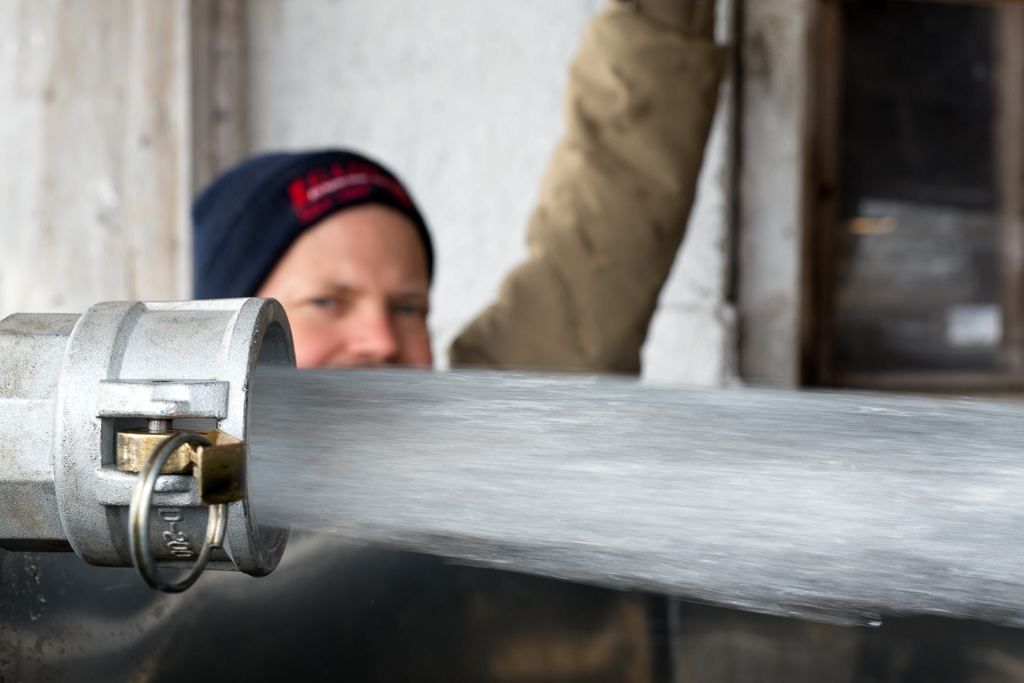Installment #4 of my March series on Ontario maple syrup production:
In a previous post, I mentioned that, at Williams Farm, syrup collection relies on a combination of gravity and vacuum pumps. In other words, everything flows down to the lowest point on the property where it gets collected in a large tank. Unfortunately, the evaporator is in the barn and the barn is situated at the highest point on the property. That means whenever the tank is full, they have to pump the sap into a mobile tank and haul it uphill by tractor to the other end of the property where they empty it into another tank beside the barn.
This illustrates a couple important considerations. First, is the reliance on pumps which means that before each maple syrup season begins, it’s important to make sure all your pumps are in good working order. Second, it’s helpful if you know something about the movement of fluid through hoses and pipes, the kind of practical knowledge you’d need if you were a plumber. As you can see from the image below, we’re not talking about the sort of trickle you get through a garden hose; we’re talking about the sort of gusher you get when you’re filling a swimming pool.
Imagine swimming in a pool full of maple sap! It reminds me a bit of Homer Simpson swimming in a vat of Duff Beer. Well, not quite. Maple sap is diluted. Even so, some people tout the health benefits of drinking maple water and have packaged and branded it. Personally, I’d rather wait for the stuff that comes out the other end of the evaporator. I might not get enough to fill a swimming pool, but I should have enough to fill a hot tub. I’m sure soaking in maple syrup is good for the skin.

